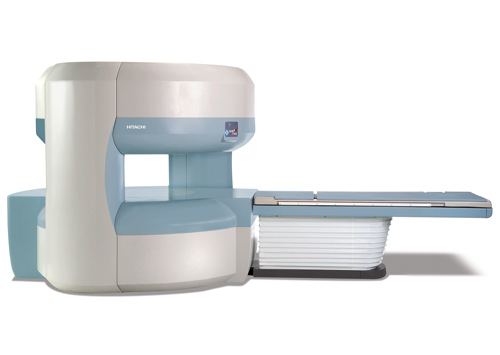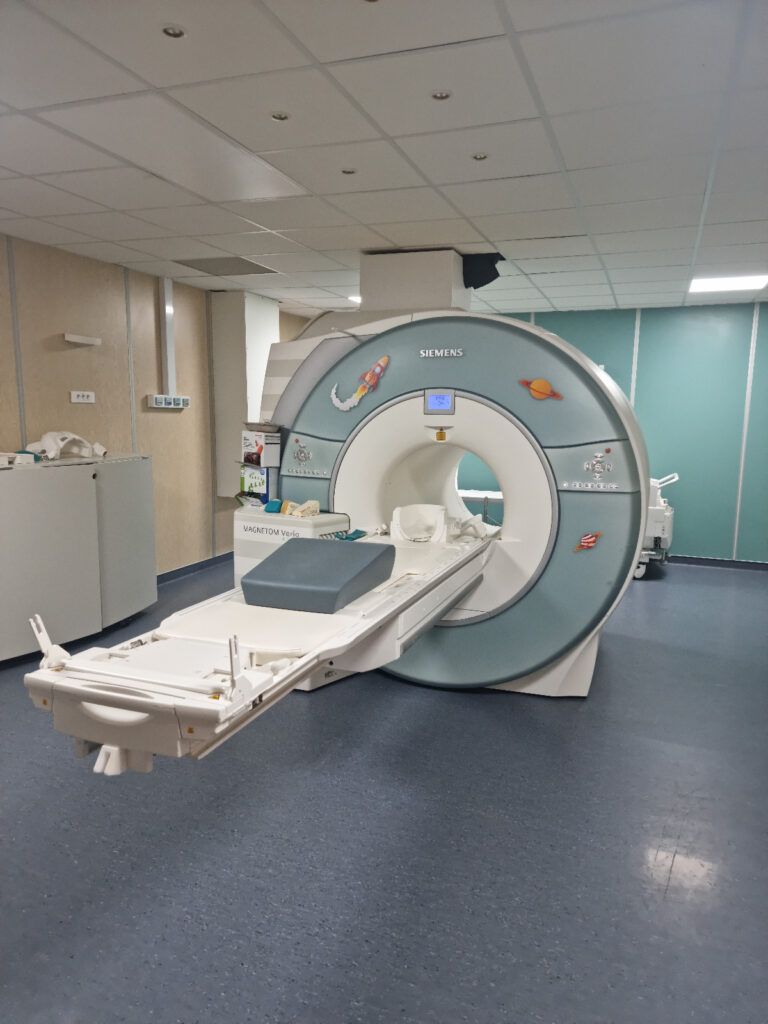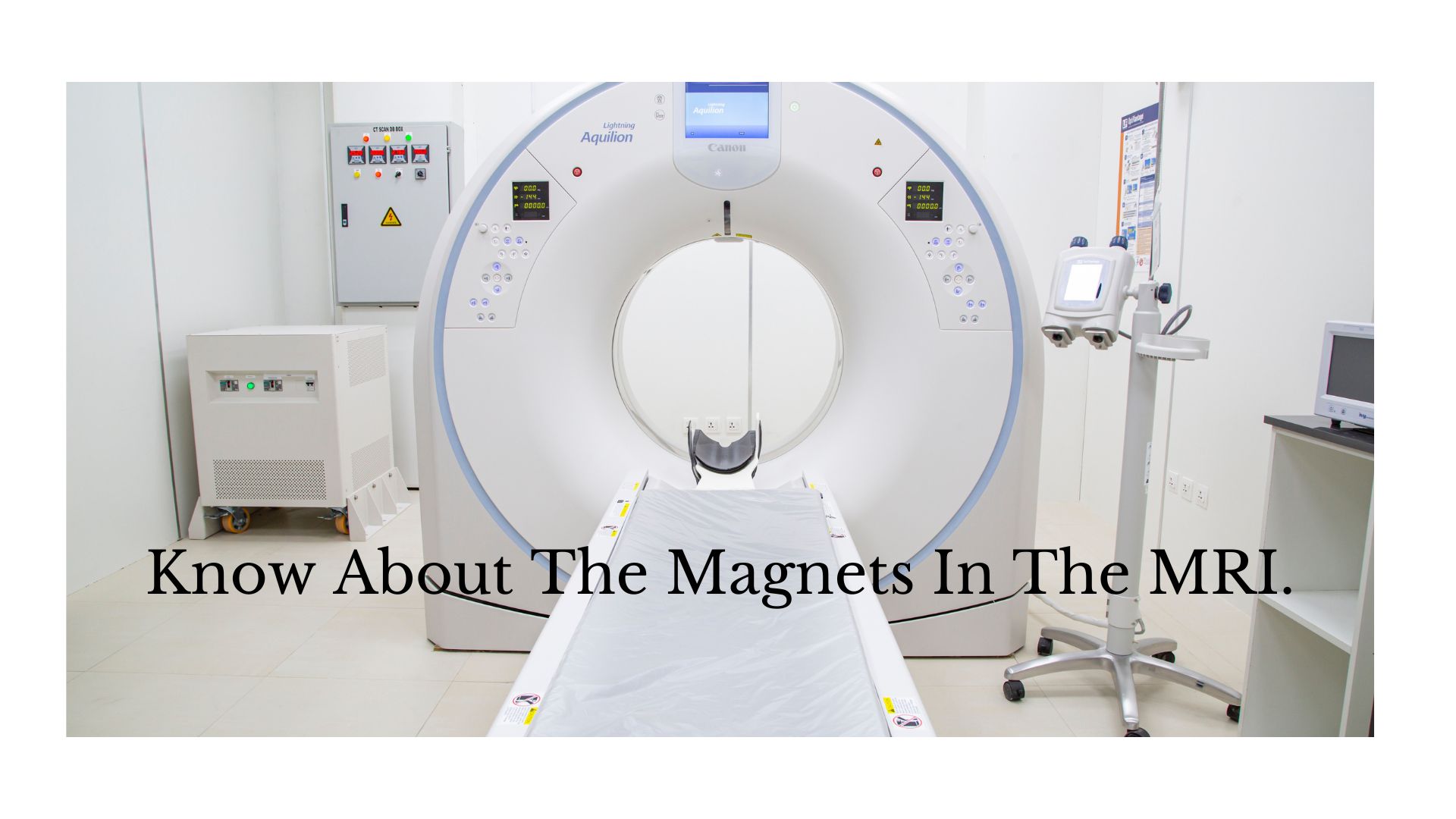Magnetic Resonance Imaging (MRI) is a medical imaging technique used to produce detailed images of the internal organs and structures in the body. MRI uses powerful magnets, radio waves, and computer technology to create these images without using any radiation or invasive procedures.
Doctors can use MRI to diagnose cancer, stroke, heart disease, joint problems, and more. MRI scans are also useful for tracking the progress of treatments like chemotherapy or radiotherapy over time.
As the MRI uses powerful magnets to produce images, the interests are the essential components in the MRI machines. The magnets in an MRI machine are of three types: Open, resistive, and superconductor.
These different types of magnets allow doctors to obtain clear images from within the body without causing harm to patients due to powerful radiation exposure used with X-Ray technology.
Open Magnets
These are becoming increasingly popular due to their ability to provide a more comfortable experience for patients. Open MRI machines, also known as Open magnet MRI machines. It is a type of MRI system with an open-sided design that offers a more spacious and less confining environment for the patient during the imaging procedure.
Unlike traditional closed-bore MRI machines, open MRI machines do not have a fully enclosed cylindrical bore. These magnets create an environment that is less claustrophobic and allows the patient to feel more at ease.
The use of these also allows doctors and technicians greater access to certain areas of the body, which can lead to better diagnosis and treatment outcomes. Additionally, they reduce noise levels compared to traditional closed-bore systems, making them much quieter.
Resistive Magnets (Less Common)
Earlier MRI machines used resistive magnets, but they are less common in modern clinical practice. It requires a large amount of electricity while imaging, it runs through the coil and generates a static magnetic field.
Resistive magnets have an electrical resistance that requires cooling of magnets. It has lower production costs. Resistive magnets have higher intensity. Unlike superconducting magnets, resistive magnets use conventional electrical conductors and require continuous electrical power to maintain the magnetic field.
Resistive MRI magnets are typically limited to lower field strengths, such as 0.2 Tesla (T) or 0.3 Tesla (T), which can result in lower image quality compared to superconducting magnets. Due to their lower field strengths and higher power consumption, resistive magnets are not commonly used for diagnostic MRI imaging today.
Superconductor Magnets
Superconductors are electromagnets; offer superior performance at lower operational costs than other magnetic materials. However, they require cryogenic cooling when outputting strong magnetic fields.
Superconducting magnets are the most widely used type of magnets in modern MRI machines. They are made of superconducting materials, typically niobium-titanium or niobium-tin alloys. It exhibits zero electrical resistance when cooled to extremely low temperatures, usually around 4 Kelvin (-269°C or -452°F).
Liquid helium cools the superconducting coils to the required low temperatures. It enables the magnets to maintain a stable and high magnetic field without significant power consumption.
Superconducting MRI magnets come in various field strengths, with 1.5 Tesla (T) and 3.0 Tesla (T) being the most common in clinical practice. Researchers and specialized imaging use higher field strengths (e.g., 7T and 9.4T).
They can create intense magnetic fields because, when the magnet is in its superconducting state, the wire surrounding the appeal has no electrical resistance.
Cryogenic cooling uses frigid temperatures to excellent materials quickly and effectively. In most cases, this involves using liquid gases, which at -160 °C or lower, are called “cryogenic temperatures”.
Difference between Open Magnets and Supercon Magnets
The main difference between open magnet MRI and superconducting magnet MRI lies in the design of the magnet system, which affects the patient experience, image quality, and clinical applications. Let’s explore each type:
Open Magnet MRI

- Design: Open magnet MRI systems have a more open and less confining design compared to traditional closed-bore MRI systems. Instead of a cylindrical bore, open MRI machines have two flat magnet panels with a larger space between them, creating an open-sided configuration.
- Patient Comfort: The open design of these MRI machines is beneficial for patients who may feel claustrophobic or have difficulty fitting inside a traditional closed-bore MRI scanner. It offers more space around the patient, reducing the feeling of confinement during the procedure.
- Applications: Open MRI systems are suitable for a wide range of imaging examinations. But they may have some limitations in terms of image quality and the ability to perform certain advanced imaging techniques. It has a lower magnetic field strength.
- Image Quality: As it is having a lower magnetic field, the image quality is not of high resolution.
Superconducting Magnet MRI (Closed Bore MRI)

- Design: They insert the patient into a cylindrical bore during the imaging procedure using a closed-bore design in superconducting magnet MRI systems.
- Patient Comfort: Some patients may feel claustrophobic inside the confined space of a closed-bore MRI scanner. Especially those who are larger in size or have anxiety about tight spaces.
- Applications: Superconducting magnet MRI systems are capable of providing high-quality images with excellent spatial resolution. It makes them well-suited for a wide range of clinical applications, including detailed imaging of the organs.
- Image Quality: The closed-bore design, coupled with higher magnetic field strengths (commonly 1.5T or 3T). It allows for better image quality, faster imaging, and the ability to perform advanced imaging techniques. Includes functional MRI (fMRI) and diffusion tensor imaging (DTI) and more.
The design of the magnet system, patient comfort, and image quality relate to the main differences. Open MRI machines are more suitable for patients who may experience claustrophobia or have difficulty fitting inside a closed-bore MRI scanner.
However, superconducting magnet MRI systems typically offer higher image quality and more advanced imaging capabilities. It is a closed-bore design and has higher magnetic field strengths. The choice between the two types of MRI systems will depend on the specific clinical needs of the patient and the imaging requirements.
How much Power is required for the Open Magnet MRI and Supercon Magnet MRI?
The power requirements for open magnet MRI and superconducting magnet MRI machines can vary depending on several factors. Including the specific model, manufacturer, field strength, and additional features of the MRI system. Generally, superconducting magnet MRI machines have higher power requirements due to their higher magnetic field strengths. Here are some general considerations:
Open Magnet MRI
- Open MRI machines typically have lower power requirements compared to superconducting magnet MRI systems.
- The power consumption for open MRI machines can range from 10 kW to 25 kW, depending on the specific model and field strength.
- Open MRI machines usually have lower magnetic field strengths (e.g., 0.3T to 0.7T).
Superconducting Magnet MRI (Closed Bore)
- Superconducting magnet MRI systems require higher power due to their magnetic field strength.
- The power consumption can range from 25 kW to 40 kW or more. It depends on the field strength and additional features of the system.
- Higher field strengths contribute to improved image quality and the ability to perform advanced imaging techniques.
It is important to note that these power consumption figures are approximate and can vary based on the specific model and configuration. Additionally, MRI systems with more advanced features, larger gantries, or additional cooling requirements may have higher power demands.
Budget Differences in Open Magnet MRI and Supercon Magnet MRI
The budget differences between open-magnet and supercon-magnet MRI scanners are quite significant. The main difference lies in the features offered by each one. Super magnets typically offer more advanced imaging capabilities as well as shorter scan times than open attractions do. Also, the costs depend on several other factors that include: year of Manufacture(YOM), Channels, field strength, slew rate, and more.
Here are some key factors that contribute to the budget differences:
Magnet Design and Technology
– Open Magnet MRI: Open MRI machines have a more straightforward and less confining design. It typically consists of two flat magnet panels with a larger space between them. This design is less complex and may require fewer components, leading to potentially lower manufacturing costs.
– Superconducting Magnet MRI: Superconducting MRI machines employ advanced superconducting materials and cryogenic cooling systems to achieve higher magnetic field strengths. The superconducting technology and more intricate design can result in higher manufacturing and maintenance costs.
Magnetic Field Strength
– Open Magnet MRI: Open MRI machines generally have lower magnetic field strengths (e.g., 0.3T to 0.7T). The lower field strengths often correspond to lower image quality and reduced ability to perform advanced imaging techniques.
– Superconducting Magnet MRI: Superconducting MRI machines are capable of achieving higher magnetic field strengths (e.g., 1.5T, 3T, or higher). Higher field strengths lead to improved image quality and the ability to perform a broader range of imaging applications, making them more suitable for diagnostic purposes.
Image Quality Capabilities
– Open Magnet MRI: While open MRI machines offer benefits in terms of patient comfort and reduced claustrophobia, they may have limitations in image quality compared to superconducting MRI machines.
– Superconducting Magnet MRI: Superconducting MRI machines provide superior image quality, better spatial resolution, and the ability to perform advanced imaging techniques like functional MRI (fMRI) and diffusion tensor imaging (DTI).
Facility and Installation Cost
– Open Magnet MRI: The open design of the MRI machine may require less infrastructure modification for installation, potentially leading to lower installation costs.
– Superconducting Magnet MRI: The installation of superconducting MRI machines may involve additional considerations, such as cryogen venting systems and other safety measures, which can increase the overall installation costs.
Used and Refurbished Options
– Open Magnet MRI: Since open MRI machines are generally considered to be of lower field strength and image quality, they may have lower initial purchase costs compared to superconducting MRI machines.
– Superconducting Magnet MRI: Refurbished superconducting MRI machines may be available at a more reasonable cost compared to brand-new systems, providing an opportunity to save on the budget.
It’s important to note that budget considerations should not solely drive the decision-making process for selecting an MRI machine. The healthcare facility should base its choice between open magnet MRI and superconducting magnet MRI on the specific clinical requirements, imaging needs, patient population, and long-term goals. Careful evaluation, consultation with experts, and understanding of the trade-offs between different MRI options will help make an informed decision.
Additional Factors that determine the cost
- Gradient and slew Rate: The gradient strength and the slew rate together are the energies that bring MRI to its top performance.
- MRI Coil type: If the coil has more channels, it is more expensive.
- Permanent Magnet or Helium-cooled Magnet: Helium-cooled magnets are more expensive to buy and also maintain. MRIs up to 0.4T have permanent magnets, these are low-priced.
In Conclusion,
It is important to know the different types of magnets used in MRI machines. Superconducting magnet technology uses liquid helium as a coolant to create higher field strengths than permanent magnets allowing faster scans with better image resolution.
Lastly, resistive magnet technology offers an economical approach compared to superconducting but generates less stable magnetic fields which can lead to poor images when subjected to movement during a scan.
When purchasing an MRI machine, it is crucial to consider the power, and budget requirements and ensure that the facility’s electrical infrastructure can support the machine’s needs.
Working with the manufacturer or a qualified medical equipment expert can help determine the exact requirements and ensure that the facility is properly prepared for the installation of the MRI system.

